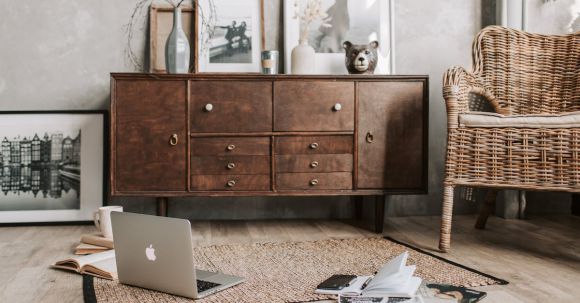Interior design is an art form that allows individuals to express their unique sense of style and creativity. One way to create a visually stunning space is by incorporating a variety of patterns and textures. Mixing patterns and textures can add depth, interest, and personality to a room, making it a true reflection of the homeowner’s taste. In this article, we will explore the art of mixing patterns and textures in interior design, providing tips and inspiration for creating a harmonious and visually appealing space.
Understanding Patterns and Textures
Before diving into the world of mixing patterns and textures, it is essential to understand the difference between the two. Patterns refer to the repetition of a specific design element, such as stripes, floral prints, or geometric shapes. On the other hand, textures relate to the visual and tactile quality of a surface, such as smooth, rough, or glossy. By combining different patterns and textures, you can add visual interest and contrast to your interior design.
Creating Balance and Harmony
The key to successfully mixing patterns and textures is to create a sense of balance and harmony within the space. Begin by choosing a dominant pattern or texture that will serve as the focal point of the room. This could be a bold wallpaper, a statement piece of furniture, or a textured rug. Once you have established the dominant element, select complementary patterns and textures that enhance and accentuate the overall design. Remember to consider the scale and proportion of each pattern and texture to ensure they work together harmoniously.
Playing with Scale and Proportion
Mixing patterns and textures allows you to play with scale and proportion, adding visual interest and dimension to your space. Experiment with combining large-scale patterns with smaller ones to create a dynamic contrast. For example, pair a large floral print with a smaller geometric pattern for a visually appealing juxtaposition. Similarly, mix textures of different scales, such as a smooth velvet sofa with a chunky knit throw, to create a tactile and inviting atmosphere.
Color Coordination
When mixing patterns and textures, it is crucial to pay attention to color coordination. Choose a color palette that ties the various patterns and textures together to create a cohesive and harmonious look. You can opt for a monochromatic scheme, using different shades and tones of the same color, or experiment with complementary colors for a more vibrant and energetic feel. Remember, the goal is to create a visually pleasing and balanced space, so be mindful of how different colors interact with one another.
Adding Depth and Visual Interest
Mixing patterns and textures is an excellent way to add depth and visual interest to your interior design. Incorporate different textures, such as a plush velvet chair, a sleek glass coffee table, and a rustic wooden shelf, to create a multi-dimensional look. Additionally, layering patterns, such as mixing striped curtains with a floral print sofa and a plaid throw pillow, can create a visually captivating space. The key is to balance the different elements while still allowing each pattern and texture to shine.
In conclusion, the art of mixing patterns and textures in interior design offers endless possibilities for creating a visually stunning and unique space. By understanding the principles of balance, scale, color coordination, and depth, you can confidently experiment with different patterns and textures to achieve a harmonious and visually appealing result. So go ahead, embrace your creativity, and let your personal style shine through in your interior design.





